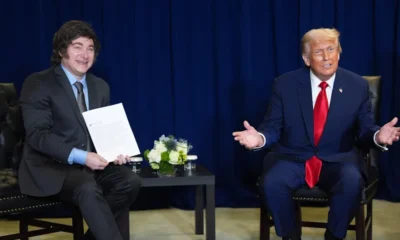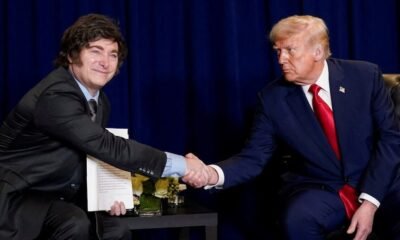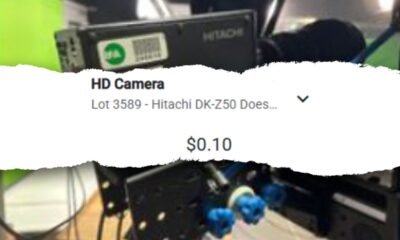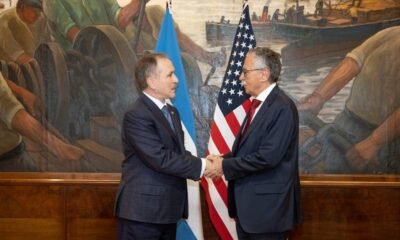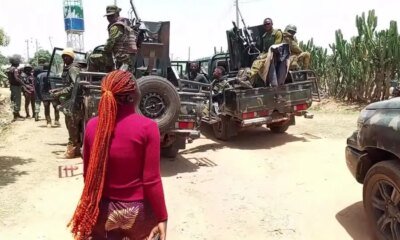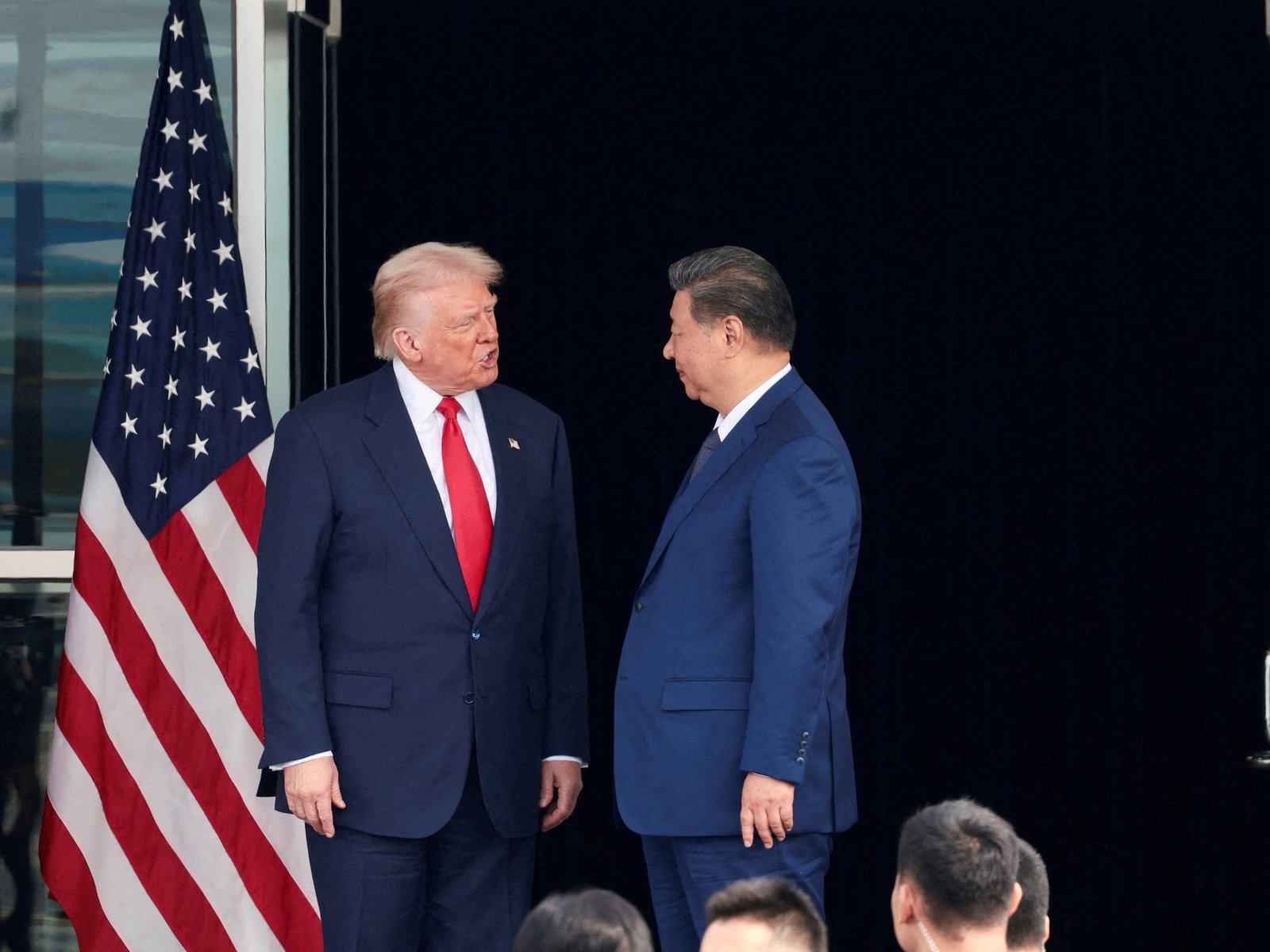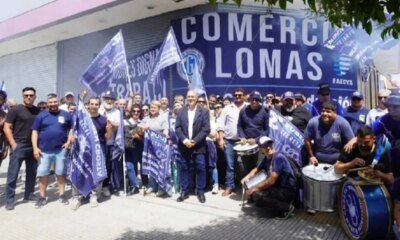INTERNACIONAL
Qué se sabe de la planta de Fordow, clave para el proyecto nuclear de Irán y atacada por los B-2 de Estados Unidos
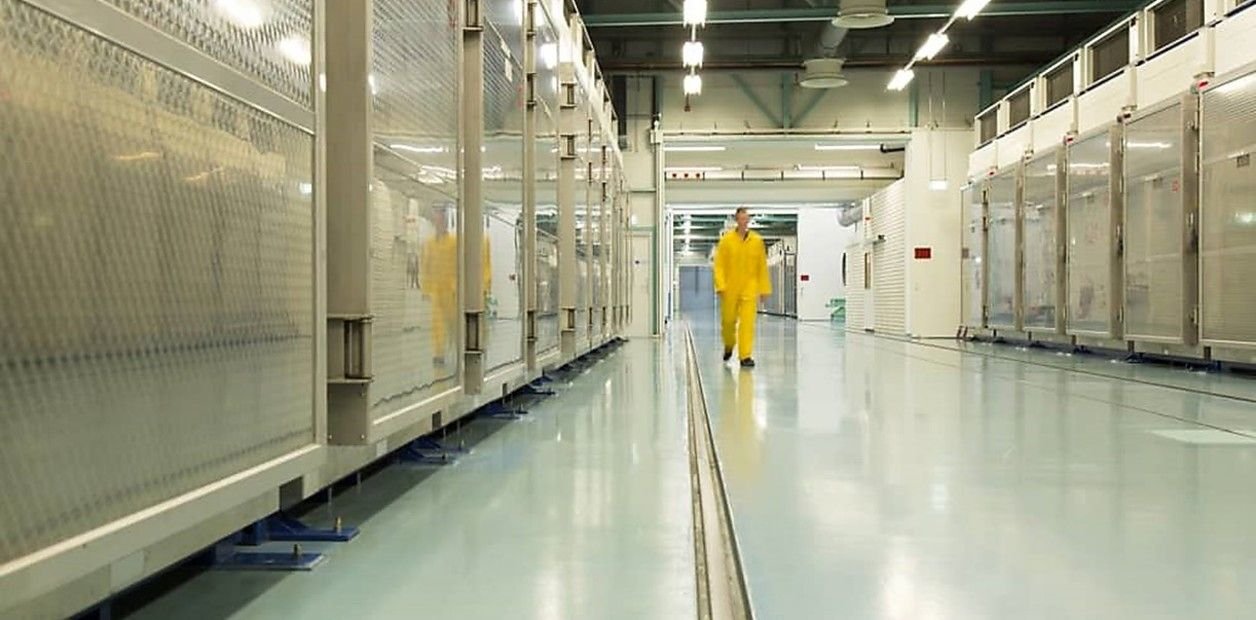
¿Cuál es la historia de la planta de Fordow?
Experimentación nuclear: la reconversión de Fordow en 2009
Un secreto subterráneo para la escalada nuclear de Irán
Alerta internacional por el uranio enriquecido de Irán
La advertencia del argentino que preside el organismo nuclear de la ONU
El diagnóstico de Trump tras el ataque a Fordow
Irán,Armas Nucleares,Estados Unidos,Donald Trump,Últimas Noticias
INTERNACIONAL
Unearthed FEC records expose Katie Porter’s hypocrisy after she fumes at ‘new billionaire’ joining race
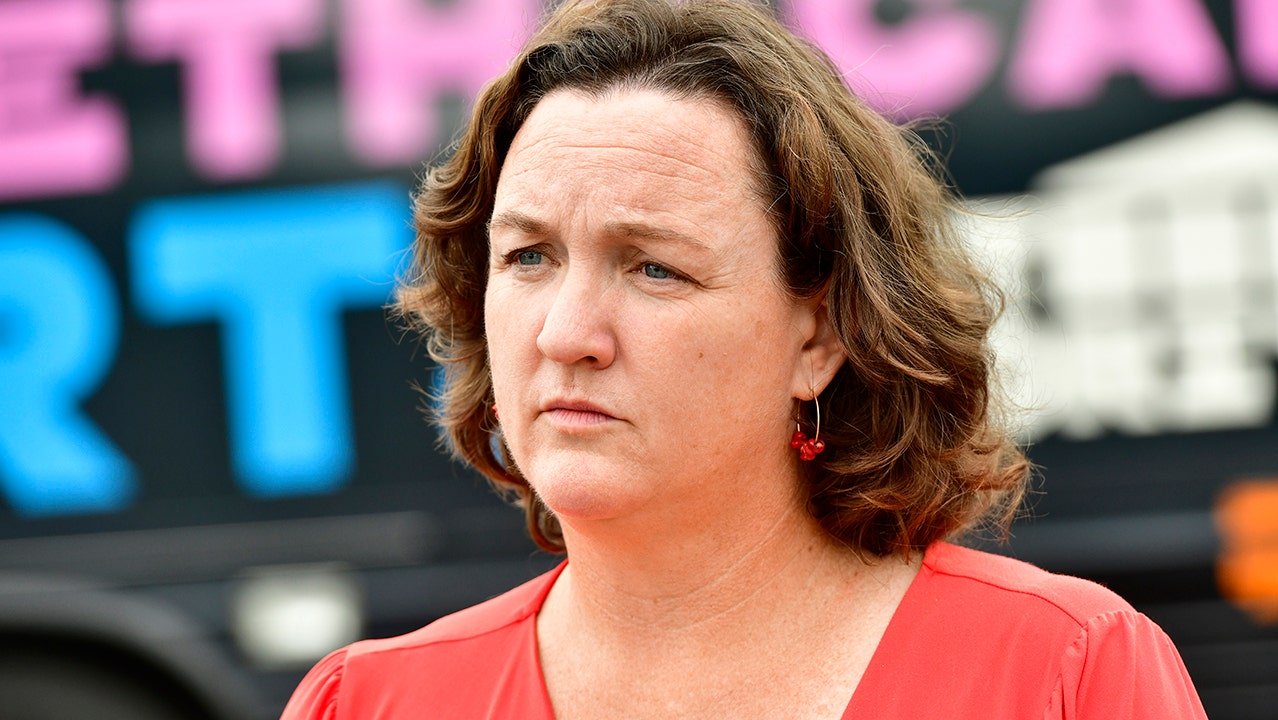
NEWYou can now listen to Fox News articles!
After billionaire activist Tom Steyer entered the California gubernatorial race Wednesday, former Congresswoman Katie Porter, who is also running for governor, blasted him despite previously taking thousands of dollars from him when she was in Congress.
Porter said Steyer was entering the race claiming to fight «the very industries he got rich helping grow,» to which the former member of Congress said: «I call bulls—.» Meanwhile, FEC filings show Porter, who is claiming to fight Steyer, received more than $16,000 between her House campaigns and failed Senate campaign.
«Katie Porter is the ultimate hypocrite and all she’s done in this race is step on one rake after another,» a longtime Democratic strategist, who has worked with campaigns across the country, told Fox News Digital. «This is easily the most disastrous race a Democrat has been running in 2026, which is why Porter is a real liability at the top of the ticket and why Democrats are looking around for alternatives.»
TOM STEYER MOUNTS CALIFORNIA GUBERNATORIAL BID, JOINING CROWD OF CANDIDATES JOCKEYING TO SUCCEED NEWSOM
Rep. Katie Porter is seen on May 28, 2023 in Los Angeles, Calif. (Jerod Harris/Getty Images for Demand Justice)
The Porter campaign did not respond to Fox News Digital’s requests for comment on this story.
Steyer, who once financed his own unsuccessful presidential bid in 2020, announced plans to enter the California gubernatorial race this week. The billionaire anti-Trump activist pledged to make life more affordable for working-class Americans and take on corporate interests in an announcement advertisement alerting people of his candidacy. Steyer specifically said he would take on the oil and tobacco industries in particular, which he touted a record of doing in the past as well.
«A new billionaire in our race claims he’ll fight the very industries he got rich helping grow — fossil fuel companies, tobacco, and private immigration detention facilities — at great cost to Californians,» Porter posted on X after Steyer announced his run. «I call bulls—.»
Attached to Porter’s post was also a screenshot of a news headline from The Sacramento Bee that reads: «Tom Steyer, starring in TV ads for tobacco tax hike, invested in tobacco companies.»
People commenting on Porter’s post highlighted her financial support she has received from Steyer in the past. Between 2018 and 2023, Porter received at least $16,100 from him, a Fox News Digital review found.
CALIFORNIA PARENTS CONVICTED OF STABBING, DECAPITATING 2 CHILDREN AND FORCING OTHER KIDS TO SEE BODIES
For Steyer, his wealth will likely be a target for his opponents.

Democratic presidential candidate businessman Tom Steyer speaks, Tuesday, Jan. 14, 2020, during a Democratic presidential primary debate hosted by CNN and the Des Moines Register in Des Moines, Iowa. (AP Photo/Patrick Semansky)
«Tom Steyer tried to buy the presidency — and he failed,» Betty Yee, a former state controller who is running in the Democratic Primary for governor, said following Steyer’s announcement. «The California governorship is not going to be his consolation prize.»
Porter, meanwhile, has faced criticism on the campaign trail for her attitude towards staffers and the media. She faced criticism last month after abruptly walking away from a CBS interview after lashing out at the reporter interviewing her.
«What do you say to the 40% of CA voters who you’ll need in order to win, who voted for Trump?» Porter was asked by CBS California’s Julie Watts during a segment on the controversial redistricting effort launched by Democrats in the state.
«How would I need them in order to win, ma’am?» Porter responded.
DID CALIFORNIA MISMANAGE THE DEADLY PALISADES FIRE?
«Well, unless you think you’re going to get 60% of the vote,» the reporter, asking about the voter breakdown of Democrats and Republicans in the state, said before Porter started laughing.
Porter then went back and forth with the reporter, arguing about whether she needs to court and win over Trump voters, particularly if she’s running head-to-head against another Democrat.
«So you don’t need them to win,» Watts asked Porter.
«I feel like this is unnecessarily argumentative,» Porter said, prompting the reporter to point out that she had asked the same question to the other candidates in the race and they answered it.
«I don’t want to keep doing this, I’m going to call it,» Porter said.
When Watts reminded Porter that every candidate had answered the question, Porter said, «I don’t care.»
CLICK HERE TO DOWNLOAD THE FOX NEWS APP
Meanwhile, Porter has also faced repeated criticism about how she allegedly treats staffers. In just a span of a single week, three videos went viral of Porter berating her staff.
The race for California governor is a crowded one, with big names like former Los Angeles Mayor Antonio Villaraigosa and former U.S. Health and Human Services Secretary Xavier Becerra. Former Vice President Kamala Harris was reportedly planning on getting involved but ultimately backed away.
Lesser known candidates include state schools Superintendent Tony Thurmond, former Controller Betty Yee and former Assemblyman Ian Calderon.
Fox News Digital’s Andrew Mark Miller and Sophia Compton contributed to this report.
california,governors,democrats elections,elections state and local,politics
INTERNACIONAL
52 Catholic school students in Nigeria kidnapped by gunmen in latest attack: report

NEWYou can now listen to Fox News articles!
Gunmen in Nigeria kidnapped several students and staff from a Catholic school early Friday, marking the latest attack on a Christian institution.
Nigerian news outlet Arise TV said 52 children were abducted from St. Mary’s School. The Catholic institution is in Agwara local government’s Papiri community, according to The Associated Press, which cited Abubakar Usman, the secretary to the Niger state government. The outlet added that Usman did not specify how many children were kidnapped in the attack.
The Niger State Police Command said military and security forces were deployed to the area where the attack took place in the early hours of Friday, the AP reported. Additionally, the Niger State Police Command said St. Mary’s educates students ages 12–17.
A security staffer was «badly shot» in the attack, according to the AP which cited a statement issued by the Catholic Diocese of Kontagora.
GUNMEN ATTACK CHURCH IN NIGERIA, KILLING TWO AND KIDNAPPING OTHERS
A drone view of Christians departing St. Peter and Paul Catholic Church after a Sunday mass in Palmgrove, Lagos, Nigeria, on Nov. 2, 2025. (Sodiq Adelakun/Reuters)
Following the attack, Usman released a statement condemning the abductions and stating that St. Mary’s made the decision to reopen despite prior security intelligence warning of increased threats, according to Arise TV.
«Regrettably, St. Mary’s School proceeded to reopen and resume academic activities without notifying or seeking clearance from the State Government, thereby exposing pupils and the staff to avoidable risk,» the statement read.
The attack at St. Mary’s follows a similar incident earlier this week in which armed attackers kidnapped 25 girls from a boarding school in Nigeria’s Kebbi State and killed at least one staffer. The search for the abducted schoolgirls is still underway.
On Wednesday, gunmen attacked the Christ Apostolic Church, killing at least two people and abducting the pastor and 38 worshippers, according to Reuters. In a video of the attack, which was reviewed and verified by Reuters, armed men are seen entering the church and taking worshippers’ belongings as gunshots ring out. The outlet later reported that a church official said the gunmen demanded a ransom of 100 million naira (roughly $69,000) per worshipper.

Gunmen pick up the belongings left behind by worshipers who ran for cover after hearing gunshots, as they walk into a Church in Eruku, Kwara state, Nigeria, on Nov. 18, 2025, in this picture obtained from social media. (Social media/via Reuters)
RAP STAR NICKI MINAJ THANKS TRUMP FOR ADDRESSING PERSECUTION OF CHRISTIANS IN NIGERIA
Nigeria has seen a series of attacks on Christians, prompting President Donald Trump to declare the West African nation a «country of particular concern» over the persecution of Christians. However, the Nigerian government has disputed the U.S.’s claims.
On Tuesday, U.S. Ambassador to the United Nations Mike Waltz held an event highlighting the ongoing violence in Nigeria. During the event, Waltz called the killings of Christians in Nigeria «genocide wearing the mask of chaos.»
«Folks, we have an entire faith that is being erased, one bullet at a time, one torched Bible at a time,» Waltz said.
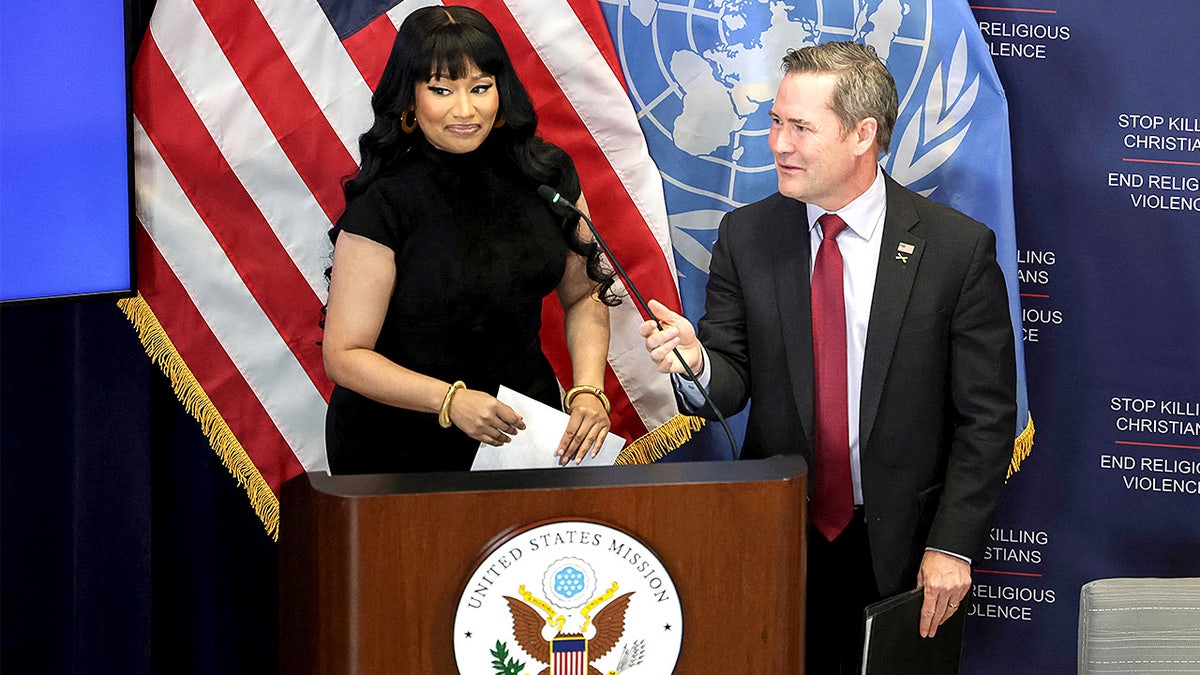
Nicki Minaj is greeted by U.S. Ambassador to the United Nations Mike Waltz ahead of a panel discussion titled «Combatting Religious Violence and the Killing of Christians in Nigeria» at the U.S. Mission to the United Nations in New York City on Nov. 18, 2025. (Angela Weiss/AFP via Getty Images)
CLICK HERE TO DOWNLOAD THE FOX NEWS APP
Rap superstar Nicki Minaj, who has been vocal about her support for the Trump administration’s efforts to combat the persecution of Christians in Nigeria, spoke at Waltz’s event. Minaj lamented that «families have been torn apart, and entire communities live in fear constantly, simply because of how they pray.»
Fox News Digital’s Ashley Carnahan and Paul Tilsley contributed to this report.
world,africa,religion,roman catholic,christianity religion,persecutions





